Authors: SCIRE Community Team | Reviewer: Arlene Aspinall and Tova Plashkes | Published: 17 February 2017 | Updated: ~
This page outlines basic information about what to expect during early health care after spinal cord injury (SCI). For basic information about what spinal cord injury is, see Spinal Cord Injury Basics.
Key Points
- Emergency care after an SCI focuses on supporting vital functions like breathing and circulation while protecting the spinal cord from further damage.
- SCI is diagnosed through a combination of history-taking, neurological assessment (physical exam) and diagnostic imaging like x-rays, computed tomography (CT), and magnetic resonance imaging (MRI).
- A wide range of different treatments may be used once in the hospital to manage symptoms and related conditions, prevent complications, and improve function.
- A person stays in the acute care hospital until their condition is stable and they are able to participate in rehabilitation or return to the community. In Canada, the average stay in an acute care hospital after a traumatic SCI is 24 days for people with paraplegia and 34 days for people with tetraplegia.
 The early health care after a major injury or illness is called acute care. Acute care is when serious and urgent health problems are addressed. It includes both emergency services in the community (like ambulance and paramedic services) and treatment at an acute care hospital. Acute care also describes any time after the initial injury when a person returns to the hospital because of a serious complication, new illness, or other major health problem.
The early health care after a major injury or illness is called acute care. Acute care is when serious and urgent health problems are addressed. It includes both emergency services in the community (like ambulance and paramedic services) and treatment at an acute care hospital. Acute care also describes any time after the initial injury when a person returns to the hospital because of a serious complication, new illness, or other major health problem.
Care in the first days and weeks after an SCI can often be overwhelming. Along with the pain and disability caused by the injury, the treatments during this time are often extensive and invasive. SCI affects every person differently, and it is difficult to predict how the body will react. Things can also change very quickly – a new infection can develop in mere hours. As a person with an SCI or as a friend or family member, make sure you ask questions of your healthcare team – part of their job is making sure that you are well-informed.
Emergency Care
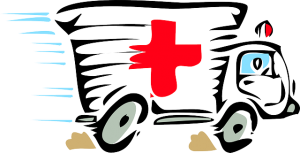 After a traumatic SCI, emergency care typically begins at the scene of the injury. Emergency first responders assess any injuries, provide emergency treatment, protect the spine, and supervise transport to the hospital. Suspected spinal injuries may go to the nearest hospital or to a hospital with specialized trauma services.
After a traumatic SCI, emergency care typically begins at the scene of the injury. Emergency first responders assess any injuries, provide emergency treatment, protect the spine, and supervise transport to the hospital. Suspected spinal injuries may go to the nearest hospital or to a hospital with specialized trauma services.
For people with non-traumatic SCI, early health care may be more variable, depending on the cause of injury and how it progresses. Some people may already be in a hospital because of another health problem or go to their family doctor if their symptoms develop more slowly.
Hospital Care
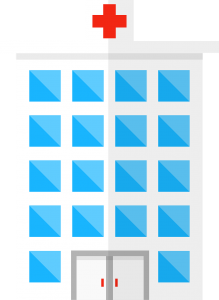 Most people arrive at the hospital through the emergency department, where their injuries are assessed by an emergency physician. Various exams and tests are used to diagnose their injuries. They are then admitted to a hospital unit depending on their medical needs. This may be the intensive care unit (ICU), a neurology or spine unit, or a general hospital ward. Some people will go directly to surgery from the emergency department.
Most people arrive at the hospital through the emergency department, where their injuries are assessed by an emergency physician. Various exams and tests are used to diagnose their injuries. They are then admitted to a hospital unit depending on their medical needs. This may be the intensive care unit (ICU), a neurology or spine unit, or a general hospital ward. Some people will go directly to surgery from the emergency department.
Unless new complications arise, a person usually moves from the ICU, where there are more resources to help the very sick, to units that are meant for people who have further recovered (a hospital ward). From there, the team will assess when they are ready to move on to their next step, whether that is the community, rehabilitation, or another hospital.
Spinal cord injury affects a wide range of different body systems and can affect the body very differently from one person to the next. The earliest period after an SCI often involves a phase of shock. This is usually a temporary period that resolves after a few days or weeks.
Early symptoms of spinal cord injury
Spinal shock happens right after injury and causes the muscles below the injury to be floppy and unmoving, which is called flaccid paralysis. This happens because the spinal reflexes below the injury are temporarily impaired in response to the injury. Spinal shock often happens together with neurogenic shock.
Neurogenic shock is when low blood pressure, slow heart rate, and low body temperature happen early after SCI because of how the injury affects the autonomic nervous system. Neurogenic shock typically affects people with cervical or upper thoracic injuries. If severe and untreated, neurogenic shock can be life-threatening.
Spinal cord injury symptoms
After shock resolves, longer-lasting spinal cord injury symptoms may be experienced. These symptoms are different for everyone and may be temporary or permanent.

- Loss of sensation or abnormal sensations (such as tingling, numbness, or pain) below the SCI
- Loss of muscle strength below the SCI, including both paralysis (complete loss of movement) and weakness
- Muscle spasms, involuntary jerking movements, and overactive reflexes below the SCI (spasticity)
- Loss of bladder and bowel control
- Changes to blood pressure and heart rate control, including autonomic dysreflexia
- Changes to breathing and coughing ability
- Changes to sexual and reproductive functions
For more details about these symptoms, see Spinal Cord Injury Basics.
Spinal cord injuries are diagnosed using a combination of different assessments and medical tests. Different tests will be chosen by the health team in different circumstances.
Interviews
Interviews with the health team establish the person’s personal and medical history, important details about the injury and what their health needs are.
Neurological assessment
Neurological assessment helps to diagnose problems with the function of the brain, spinal cord, and nerves. This includes physically testing reflexes, sensation, strength, and movement. The most common assessment used for spinal cord injury is the International Standards for Neurological Classification of Spinal Cord Injury (ISNCSCI) exam.
International Standards for Neurological Classification of Spinal Cord Injury Exam (ISNCSCI Exam)
The ISNCSCI Exam (often called the American Spinal Injury Association (ASIA) Exam) is a physical exam that is used to classify spinal cord injuries. It determines the neurological level of injury and the completeness of the injury.
This exam involves a health provider carefully testing muscle strength, pinprick sensation, and light touch sensation at specific areas on the right and left sides of the body.
For more information about this exam, see Spinal Cord Injury Basics.
Diagnostic imaging and other tests
X-rays use radiation to visualize the bones of the spine. X-rays can identify broken bones, unstable parts of the spine, and help monitor healing bones. They are also sometimes used to look at possible changes in the lungs or other soft tissues.
Computed tomography (CT) uses a series of x-rays taken from different angles that are compiled together to create cross-sectional images that appear as slices through the body. CT can be used to see the bones and tissues in greater detail than x-rays.
Magnetic resonance imaging (MRI) uses a magnetic field and radio waves to create cross-sectional images through the body. MRI is usually used to view the spinal cord and other soft tissues like muscles, nerves, and blood vessels in greater detail.
Electrophysiological testing measures electrical activity in the nerves, spinal cord, and brain. Nerve conduction studies, somatosensory evoked potentials, and motor evoked potentials are types of electrophysiological testing. In these tests, one part of the nervous system, like the brain or the nerves, is stimulated using magnetic or electrical signals and the response elsewhere in the body is then measured. This is used to further understand conduction in the nervous system. It is sometimes used during surgery as well as later in the hospital stay or as an outpatient.
Blood tests study the makeup of the blood to help guide treatment of many different conditions related to SCI.
Preventing movement of the spine

Individuals suspected of SCI are placed on a spinal board to immobilize their spine.9
If a spinal injury is suspected after an accident, the spine is stabilized to prevent movement. The whole spine will be stabilized regardless of where the injury is suspected to be. Emergency teams use special transfer techniques and equipment to maintain this stability during transport. Special equipment includes spinal boards, neck collars, blocks beside the head, and support straps.
Spinal trauma can happen in many different ways, and how a person is immobilized and removed from the accident scene must be suited to the situation. For example, emergency rescue techniques will be different if the person is in the water after a diving accident compared to someone who is in a car after an accident. Children and people with certain spinal conditions may be transported in slightly different positions because their spines have naturally different curves. The person is taken off of the spinal board as early as possible because staying too long on a spinal board can cause skin problems.
Supporting circulation
![]() Low blood pressure and changes to heart rate can happen after an SCI. This can lead to poor circulation of blood in the body. Intravenous (IV) fluids (fluids that are given through a tube inserted into a vein) and medications are used to help maintain blood pressure and heart rate within a safe range.
Low blood pressure and changes to heart rate can happen after an SCI. This can lead to poor circulation of blood in the body. Intravenous (IV) fluids (fluids that are given through a tube inserted into a vein) and medications are used to help maintain blood pressure and heart rate within a safe range.
Supporting breathing

An inflated bag that connects with a facemask to give breaths.11
In emergency situations, emergency responders use an inflated bag that connects with a facemask to give breaths. Oxygen may be given through a facemask or nasal prongs. Some people need breathing tubes to support breathing, such as an endotracheal tube (a tube placed into the airway through the mouth) or a tracheostomy tube (a tube placed into the airway through an incision on the front of the neck). These tubes allow for more direct access for the breaths given from a mechanical ventilator or a healthcare provider.
Mechanical ventilation may be used if breathing problems continue in the hospital. Mechanical ventilation uses a machine to provide breaths or to assist with breathing. Some people may need to use mechanical ventilation permanently after injury, others for only a short time.
Tracheostomy
If mechanical ventilation is expected to continue for a long time, a tracheostomy may be needed. A tracheostomy is the creation of a hole from the outside of the front of the neck through to the trachea (windpipe) through which a tube is placed. Air can then bypass the mouth and nose; making mechanical ventilation more effective and allowing for tubes placed through the mouth to be removed. This can allow for better communication, eating, and mouth care. People who need a tracheostomy tube are often not able to speak or eat solid food right away as they need to relearn those skills as the muscles involved have become weak and uncoordinated.
Reducing pressure on the spinal cord and stabilizing the spine
In the days to weeks after an SCI first happens, pressure on the spinal cord from pieces of broken bone or other tissues can lead to further damage. This pressure can be removed through surgery or using non-surgical methods like traction. Traction is the use of a gradually applied force that pulls the vertebrae of the spine apart lengthwise (from the top of the head to the tailbone) to bring the spine into alignment. Traction can be applied using special equipment such as a halo brace or other methods. This technique is usually only used for certain types of cervical spine dislocations.
Spine surgery
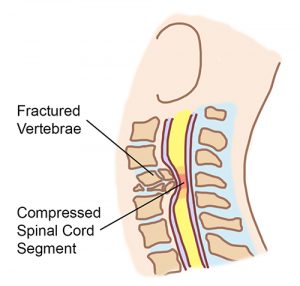
Removing pressure from pieces of broken bone or other tissues from the spinal cord is called ‘decompression.13
Spine surgery may be done to prevent further damage and allow for healing and early movement. Spine surgery may involve several procedures:
- Decompression is when anything that is putting pressure on the spinal cord, such as pieces of bone or other tissues, is removed.
- Reduction is the realignment of dislocated bones or pieces of bone into their proper positions.
- Stabilization or fusion may involve the use of surgical plates, rods, and screws, as well as bone grafts (a transplant of bone tissue from one area of the body to another) to keep the bones and bone pieces from moving while they heal and afterward.
After pressure is removed from the spinal cord, the spine may be stabilized to allow it to heal. This may be done surgically (see above) or non-surgically. Non-surgical stabilization may be done using rigid neck collars to stabilize the cervical spine and rigid or flexible braces for the thoracic and lumbar spine. Bracing is also sometimes used in combination with surgery and other treatments.
Preventing secondary injury (neuroprotection)
Damage to the spinal cord can continue for days to months after the injury because of processes like swelling and inflammation. This is called secondary injury. A number of treatments, such as methylprednisolone, have been suggested to help minimize secondary injury. These treatments are referred to as neuroprotection. Currently, there are no widely established treatments for this purpose. However, treatment options are available in some facilities and research activities in this area are ongoing.
See our article on Neuroprotection for further information.
Treating other injuries and illnesses
Injuries and illnesses other than the SCI may need treatment in the hospital. For example, brain injuries, bone and joint injuries, and severe bleeding often happen at the same time as an SCI and require additional treatments while in the hospital.
Many different complications can develop while in the hospital after a spinal cord injury, such as pneumonia, blood clots, and pressure sores. Preventing complications is very important during the stay in the hospital since complications can cause longer hospital stays and be life threatening.
Lung infections
 Secretions (phlegm) can build up in the lungs if a person is not able to get enough air into the lungs or has a weak cough. This increases the risk of developing lung infections like pneumonia. Getting up and moving early after injury, taking many deep breaths (sometimes with the help of a machine or special air bag), keeping hydrated and coughing regularly are the main methods of preventing lung infections.
Secretions (phlegm) can build up in the lungs if a person is not able to get enough air into the lungs or has a weak cough. This increases the risk of developing lung infections like pneumonia. Getting up and moving early after injury, taking many deep breaths (sometimes with the help of a machine or special air bag), keeping hydrated and coughing regularly are the main methods of preventing lung infections.
Other techniques may also be used by the health care team to help keep lungs clear of phlegm such as:
- Suctioning involves the use of a narrow flexible tube with a small amount of suction applied to it. The tube is inserted into the airway through the mouth, nose, or breathing tube to remove phlegm.
- Assisted coughing involves physical assistance from another person and/or a machine to cause a cough to help clear the lungs.
- Physical chest treatments (chest physiotherapy) involve hands-on techniques performed by a therapist or caregiver that consist of vibrating the rib cage or tapping on the rib cage with a cupped hand, followed by assisted coughing and/or suctioning.
Blood clots
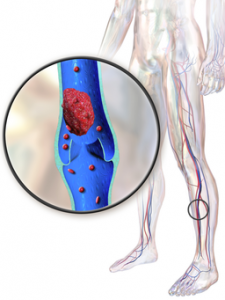
The leg is a common site for DVT.15
A blood clot that forms in the veins is called a deep vein thrombosis (or DVT). If a person is motionless for a period of time, the blood does not circulate well and can form clots as it sits in one spot. Blood clots can then break free from the veins and travel to the lungs, which can be life threatening.
Blood clot prevention usually begins within the first few days after injury. In most cases, early use of medications to prevent the clots from forming or to break down clots is the main treatment for preventing blood clots. Early movement and devices like compression stockings and calf compressors may also aid circulation.
Pressure injuries
A pressure injury (or pressure sore) is a breakdown of the skin and tissues in response to pressure and other forces. Pressure sores can be difficult to heal and are susceptible to infections. Preventing pressure sores may involve regular skin inspections, pressure relief techniques, special movement and transfer skills, good skin care, and specialized bedding and seating.
See our article on Pressure Injuries for further information.
Urinary tract infections
Urinary tract infections are a common complication after SCI that involves an infection of some part of the urinary tract. This may be the kidneys, the bladder, or their connecting tubes: the ureters (connects each kidney to the bladder) or the urethra (from the bladder to the outside). Infection of the kidneys may also be referred to as pyelonephritis and infection of the bladder may be referred to as cystitis or a bladder infection. Preventing urinary tract infections involves regular bladder emptying using catheters, proper hygiene, maintaining proper hydration, and medications to prevent infections.
See our article on Urinary Tract Infections for more information.
Sepsis
Serious infections can result from many of the complications of SCI, including urinary tract infections, pressure sores, and lung infections. Sepsis is when an infection has the potential to spread into the bloodstream and affect the whole body. The body responds to a widespread infection by triggering an exaggerated immune response which can lead to tissue damage and organ failure. Sepsis can be life threatening, and requires immediate treatment as soon as it is recognized.
Spinal cord injury affects many of the systems of the body, which can result in many different health issues. The following conditions are common after injury and may need to be addressed during acute care.
Autonomic dysreflexia
 Autonomic dysreflexia is a sudden increase in blood pressure that can happen in people with injuries at T6 and above. It may also result in headache, sweating above the injury, and dry pale skin below the injury. While this condition is more common in later stages, it can also happen early after injury. Treatment involves putting the person into an upright position and removing anything irritating or painful below the injury. If this does not reduce blood pressure, medications are used to quickly lower blood pressure. If the condition is not recognized and treated, blood pressure can remain elevated and this can be life threatening.
Autonomic dysreflexia is a sudden increase in blood pressure that can happen in people with injuries at T6 and above. It may also result in headache, sweating above the injury, and dry pale skin below the injury. While this condition is more common in later stages, it can also happen early after injury. Treatment involves putting the person into an upright position and removing anything irritating or painful below the injury. If this does not reduce blood pressure, medications are used to quickly lower blood pressure. If the condition is not recognized and treated, blood pressure can remain elevated and this can be life threatening.
See our article on Autonomic Dysreflexia to learn more.
Bladder problems

Bladder problems can cause leaking of urine, inability to fully empty the bladder, or overfilling of the bladder. Bladder problems are managed through the use of catheters, medications, bladder routines, electrical stimulation, and surgeries.
See our article on Bladder Changes after Spinal Cord Injury for more information.
Bowel problems
 Bowel problems can cause symptoms such as constipation, difficulty controlling bowel movements, and accidental leakage. Bowel problems are managed by developing a regular routine that may include the use of medications, special diets, hands-on methods of emptying the bowels, and surgeries.
Bowel problems can cause symptoms such as constipation, difficulty controlling bowel movements, and accidental leakage. Bowel problems are managed by developing a regular routine that may include the use of medications, special diets, hands-on methods of emptying the bowels, and surgeries.
To learn more about the Bowel after SCI, check out this article!
Breathing problems
 Breathing problems may occur after injury depending on the level and completeness of the injury. Many people with cervical and thoracic complete injuries have impaired muscles for independent breathing and coughing. People with breathing problems may use a ventilator or other supports to help with breathing.
Breathing problems may occur after injury depending on the level and completeness of the injury. Many people with cervical and thoracic complete injuries have impaired muscles for independent breathing and coughing. People with breathing problems may use a ventilator or other supports to help with breathing.
Movement problems
![]() Movement problems can result in paralysis or weakness of muscles below the injury. Movement and mobility training can include exercise, transfer training, wheelchair skills training, practicing daily living tasks, practicing walking (after an incomplete injury, where possible), electrical stimulation, and many other potential treatments, beginning as early as acute care and continuing long-term.
Movement problems can result in paralysis or weakness of muscles below the injury. Movement and mobility training can include exercise, transfer training, wheelchair skills training, practicing daily living tasks, practicing walking (after an incomplete injury, where possible), electrical stimulation, and many other potential treatments, beginning as early as acute care and continuing long-term.
Pain
![]() Pain is common after SCI and usually begins within the first six months after injury. Controlling pain in the early stages is an essential part of acute care. Treatment can include a variety of different types of medications based on the type of pain. Other types of treatments for pain include exercise, talk therapies, massage and heat, electrical modalities, and surgical treatments.
Pain is common after SCI and usually begins within the first six months after injury. Controlling pain in the early stages is an essential part of acute care. Treatment can include a variety of different types of medications based on the type of pain. Other types of treatments for pain include exercise, talk therapies, massage and heat, electrical modalities, and surgical treatments.
See our article on Pain after Spinal Cord Injury for more information.
Spasticity
 Spasticity includes muscle spasms, involuntary jerking movements, and overactive reflexes. It can interfere with daily activities, make walking difficult, and contribute to other conditions like pain, contractures, and pressure sores. Treatment of spasticity includes the use of medications like Baclofen as well as other treatments like positioning, stretching, electrical stimulation, and surgery.
Spasticity includes muscle spasms, involuntary jerking movements, and overactive reflexes. It can interfere with daily activities, make walking difficult, and contribute to other conditions like pain, contractures, and pressure sores. Treatment of spasticity includes the use of medications like Baclofen as well as other treatments like positioning, stretching, electrical stimulation, and surgery.
See our article on Spasticity for more information.
Depression
![]() Depression is a common disorder involving low mood, a loss of interest or pleasure in daily life, sleep difficulties and other mental and physical symptoms. Depression is the most common mental illness among people with SCI and can affect adjustment after injury, function, and quality of life. Treatments like talk therapies, medications, and exercise programs may be used to address depression. Note that a person who has just had an SCI may experience many emotions such as fear, grief, anger and sadness. This is often a natural part of the process of coming to terms with an SCI, and does not necessarily indicate depression.
Depression is a common disorder involving low mood, a loss of interest or pleasure in daily life, sleep difficulties and other mental and physical symptoms. Depression is the most common mental illness among people with SCI and can affect adjustment after injury, function, and quality of life. Treatments like talk therapies, medications, and exercise programs may be used to address depression. Note that a person who has just had an SCI may experience many emotions such as fear, grief, anger and sadness. This is often a natural part of the process of coming to terms with an SCI, and does not necessarily indicate depression.
See our article on Depression after Spinal Cord Injury for more information.
Orthostatic hypotension
 Orthostatic hypotension is a drop in blood pressure that happens when a person moves from lying into an upright position. It can cause light-headedness, dizziness, fainting, and blurred vision. Medications and other treatments like abdominal binders, pressure stockings, and controlling fluid and salt intake may be used to prevent changes in blood pressure.
Orthostatic hypotension is a drop in blood pressure that happens when a person moves from lying into an upright position. It can cause light-headedness, dizziness, fainting, and blurred vision. Medications and other treatments like abdominal binders, pressure stockings, and controlling fluid and salt intake may be used to prevent changes in blood pressure.
See our article on Orthostatic Hypotension for more information!
Malnutrition
 Malnutrition can happen because many of the medical treatments used in the hospital can make it difficult to eat normally. For example, a tube in the throat is often necessary to help breathing right after an injury and during surgery. In order to prevent malnutrition, a feeding tube may be inserted through the nose or the wall of the stomach, which supplies liquid food directly into the stomach. Despite this, the body often does not have enough fuel to heal and is missing essential nutrients and electrolytes. Poor nutrition can lead to poor healing and increased chances of other problems like pressure injury and infection.
Malnutrition can happen because many of the medical treatments used in the hospital can make it difficult to eat normally. For example, a tube in the throat is often necessary to help breathing right after an injury and during surgery. In order to prevent malnutrition, a feeding tube may be inserted through the nose or the wall of the stomach, which supplies liquid food directly into the stomach. Despite this, the body often does not have enough fuel to heal and is missing essential nutrients and electrolytes. Poor nutrition can lead to poor healing and increased chances of other problems like pressure injury and infection.
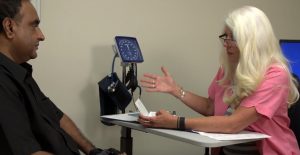 Experiencing a spinal cord injury can be a life-changing experience. It is common for people to experience emotions like sadness, disbelief, anger, grief, confusion, helplessness, anxiety, post-traumatic stress reactions, or other difficulties coping. However, there is no predictable response that everyone will have after an SCI; it is different for everyone.
Experiencing a spinal cord injury can be a life-changing experience. It is common for people to experience emotions like sadness, disbelief, anger, grief, confusion, helplessness, anxiety, post-traumatic stress reactions, or other difficulties coping. However, there is no predictable response that everyone will have after an SCI; it is different for everyone.
Some people may develop psychological conditions like depression, substance abuse disorders, or post-traumatic stress disorder. Risk for suicide is also higher among people living with a SCI than in the general population. However, the majority of people do not develop major psychological conditions after an SCI.
Positive coping and adjustment to an SCI may be supported through activities like:
- Speaking with a mental health provider like a social worker, counsellor, or psychologist;
- Bringing up questions or concerns with other members of the health team, like doctors and nurses;
- Seeking support from loved ones like family, partners, and friends, and staying socially engaged;
- Seeking out peer-support programs or groups, that can arrange for you to meet with other people who have experienced living with a SCI; and
- Taking an active role in treatment and developing positive and active ways of coping.
For more information, see our article on Depression after Spinal Cord Injury.
The health care team is made up of a number of health professionals with different areas of expertise. The team works together with the person and their family to meet their treatment goals.
- Emergency medical responders (Paramedics or Emergency medical technicians) arrive at the site of an injury in an ambulance. They provide emergency treatment and supervise transport of the person to the hospital.
- Emergency physicians are medical doctors who work in the emergency department and specialize in treating medical emergencies when they first arrive at the hospital. They are responsible for the first medical assessment, directing early care, and referring to other specialists and professionals.
- Physiatrists (Physical medicine and rehabilitation physicians) are medical doctors who specialize in rehabilitation. Physiatrists work on the medical care of people with spinal cord injuries and their rehabilitation. They are also consulted to help determine if a person is suitable to attend rehabilitation.

- Specialist physicians may be consulted for various conditions and specialty treatments related to spinal cord injury. These might include General Surgeons, Neurologists (nervous system), Urologists (urinary system), Plastic Surgeons (restoration or reconstruction surgery), Orthopaedic Surgeons (bone, muscle, and joint surgery), and Neurosurgeons (nerve and brain surgery).
- Nurses provide direct care or consultation to patients across all aspects of health care. Nurses work on many aspects of care after spinal cord injury, including taking care of patients’ day-to-day needs, pain management, bowel and bladder routines, wound management, sexual health, and skin care. Nurse practitioners are nurses with additional training who have expanded or specialized roles in medical care.
- Pharmacists specialize in medication management. They prepare and dispense medications and provide consultation to patients and other professionals about medication use.
 Physiotherapists (Physical therapists, PTs) specialize in helping people improve their movement and function. Physiotherapists work with people with spinal cord injuries on developing strength and movement, mobility skills like transfers and walking, and in other areas like prescribing mobility devices and treating wounds and pain.
Physiotherapists (Physical therapists, PTs) specialize in helping people improve their movement and function. Physiotherapists work with people with spinal cord injuries on developing strength and movement, mobility skills like transfers and walking, and in other areas like prescribing mobility devices and treating wounds and pain.- Occupational therapists (OTs) specialize in helping people to meet their goals for daily living and functional activities. Occupational therapists work with people with spinal cord injuries on developing skills for daily tasks like bathing, dressing, and eating. They also assess the safety and accessibility of living spaces and prescribe equipment like wheelchairs and braces.
- Speech-language pathologists (SLPs) specialize in speech, swallowing, language, and communication. Speech-language pathologists work with people with spinal cord injuries on improving speech and swallowing, dealing with problems associated with breathing assistance like mechanical ventilation and tracheostomies, and developing communication skills.
- Therapy assistants (Rehabilitation Assistants, Physical Therapy Assistants, Occupational Therapy Assistants, Speech-Language Assistants) work under the supervision of physical therapists, occupational therapists, and speech-language pathologists to assist with the person’s rehabilitation plan. A therapy assistant may work on tasks like assisting a person to sit in a chair, practice self-care skills, or practice swallowing or communication skills after a tracheostomy is removed.
- Respiratory therapists (RTs) specialize in the treatment of conditions related to the cardiopulmonary system (the heart and lungs). Respiratory therapists are involved with treatments related to oxygen, suctioning, mechanical ventilation, and other treatments in North America. Physiotherapists fulfill this role in other parts of the world.
- Social workers specialize in assisting people to improve their social wellness. Social workers provide support and counselling to assist with coping and recovery from their spinal cord injury, counselling about resources in the community, and planning for care after the hospital.
 Psychologists are health professionals who specialize in mental health and treating mental disorders. Psychologists provide assessment, counselling, and therapy for mental disorders and support for problems related to coping and adjustment.
Psychologists are health professionals who specialize in mental health and treating mental disorders. Psychologists provide assessment, counselling, and therapy for mental disorders and support for problems related to coping and adjustment.- Dieticians specialize in nutrition and diet. Dieticians may be involved in determining nutritional needs, meal planning, and education about changes to diet.
- Spiritual care professionals (Chaplains) provide counselling related to spiritual, emotional, and religious support.
![]() There are many different pieces of equipment and machines that may be present at the bedside and attached to the body in the hospital. These are used to help monitor body functions and manage health.
There are many different pieces of equipment and machines that may be present at the bedside and attached to the body in the hospital. These are used to help monitor body functions and manage health.
Machines and Equipment
- Mechanical ventilator: Mechanical ventilation provides breathing support for people who have difficulty breathing on their own. It is a large machine with buttons, a screen showing the types of breaths being given, and tubes that lead into the airways through the mouth or neck (tracheostomy).
- Assisted cough machine: An assisted cough machine is used to support coughing to help fill the lungs with air and clear phlegm from the lungs. Assisted cough machines are portable machines that attach to a face mask or breathing tube to assist in filling the lungs and coughing using changes in air pressure.
- Heart rate, blood oxygenation, and blood pressure monitors: Small devices may be clamped onto the finger, ear, or toe to monitor the amount of oxygen in the blood and heart rate. An inflatable cuff around the arm is used to monitor blood pressure.
 Electrocardiogram (ECG) monitoring: Electrocardiograms or ECGs are used to measure the rate and rhythm of the heart in greater detail. ECG involves the use of a number of small sticky pads which are attached at various points on the chest and body. These are connected via electrical leads to a monitor that displays the heart rhythms.
Electrocardiogram (ECG) monitoring: Electrocardiograms or ECGs are used to measure the rate and rhythm of the heart in greater detail. ECG involves the use of a number of small sticky pads which are attached at various points on the chest and body. These are connected via electrical leads to a monitor that displays the heart rhythms.- Invasive monitoring equipment: Tubes may be inserted through catheters into the major blood vessels and heart to continuously and accurately measure pressures within the blood vessels and heart. These very small tubes are inserted in the neck, arms, or wrist and threaded into the blood vessel. They are then connected to monitors that display the information gathered.
- Intravenous pumps: Machines that attach to the intravenous bags and tubes pump the fluids and medications through the tube at a set rate. In the intensive care unit, there may be many of these at the bedside, each for a different medication.
- Braces and orthoses: While the injury is healing, the spine may be stabilized using braces and orthoses. Cervical spine injuries may have a rigid neck collar or a metal halo brace. A halo brace is a head band that is held in place on the head by pins in the skull and attached to a stiff vest by metal rods. Thoracic and lumbar spine injuries may have bracing of the back using a back brace or plaster cast, or may have a Sternal Occipital Mandibular Immobilizer (SOMI) brace, which stabilizes from under the chin and behind the back of the head to a vest.
- Other equipment: There are often many pieces of equipment in the room which you may not recognize. Ask your healthcare team about anything you are wondering about.
Tubes and Bags
- Intravenous (IV) tubes: In the hospital, fluids and medication are often given through an intravenous (IV) line, which is a tube connected from a bag of fluid directly into a vein. Sometimes fluids are given through larger blood vessels through central venous catheters in the arm, neck or chest. Medications can also be given through an IV.
 Feeding tube: A feeding tube may be used to deliver nutrition. This tube may go into the body through the nose, stomach, or small intestine.
Feeding tube: A feeding tube may be used to deliver nutrition. This tube may go into the body through the nose, stomach, or small intestine.- Urine bag and catheter: A urinary catheter is a tube that is inserted into the urethra or placed over the genitals in men (a condom catheter) to collect urine. This is important to maintain hygiene and prevent pressure sores. The bag where the urine is collected is hung on the bed while in bed but can also be attached to the leg in a more discrete manner when moving around.
- Suction tube: A tube connected to suction at the bedside or attached to breathing tubes is used to suction phlegm out of the airway.
- Oxygen mask, nasal prongs, or oxygen tube: Oxygen may be given through a face mask, nasal prongs, or a breathing tube. This tube is usually connected to an oxygen outlet on the wall or an oxygen tank.
- Chest tube: For injuries or surgeries in the chest or thoracic region, a tube may be placed into the chest to drain excess fluid (such as blood or pus) or air that is pressing on the lungs. Drainage allows the lungs to heal and re-expand. The chest tube is attached to a sealed container that is placed below the level of the chest (usually on the ground for safety) to collect the drainage.
- Pain pump: Pain medications may be given through a machine at the bedside that administers pain medications at regular intervals or as needed. This is often called a patient-controlled analgesia or PCA pump, because the patient can press a button to give the pain medications when they need it. Pain medications may also be given by mouth, applied to the skin, or through other methods.
 Patients stay in the acute care hospital for as long as they need specialized medical care. When a person is medically stable and able to participate in therapy at a rehabilitation center or from home, they usually leave the acute care hospital.
Patients stay in the acute care hospital for as long as they need specialized medical care. When a person is medically stable and able to participate in therapy at a rehabilitation center or from home, they usually leave the acute care hospital.
Every person’s experience is different, and there are many factors that influence the length of stay in the hospital. The characteristics of the injury and a person’s life circumstances can both influence how long they stay in hospital. For example, the level of injury, the extent of other symptoms, or complications like pressure ulcers or pneumonia can all influence the hospital stay.
In Canada, the Rick Hansen Spinal Cord Injury Registry collects and analyzes information from participating hospitals and rehabilitation centers for patients with traumatic spinal cord injury. This includes how long individuals stay in their care. The most recent available statistics are from 2016 and show the average length of stay in acute care hospitals in Canada to be 24 days for people with paraplegia and 34 days for people with tetraplegia. However, stays in acute care can range anywhere from a few days to several months
Once a person is ready to be discharged from the hospital, there are several places that a person may go to continue with their recovery.
Rehabilitation
 Most people recovering from a spinal cord injury will go to a rehabilitation center or special rehabilitation unit of a hospital after acute care. In rehabilitation, they will continue with their recovery and learn the skills and knowledge to function well in their life outside of the health care system.
Most people recovering from a spinal cord injury will go to a rehabilitation center or special rehabilitation unit of a hospital after acute care. In rehabilitation, they will continue with their recovery and learn the skills and knowledge to function well in their life outside of the health care system.
See our article on Understanding Rehabilitation for more information.
Home
![]() Those individuals who do not require extensive rehabilitation will go home to live in the community. While living at home, rehabilitation services may be given as an outpatient, meaning that they visit a hospital or health facility to receive health services but do not stay there overnight. Supports such as home modifications and home visits from the health team may also be needed before a person can return to their home environment safely.
Those individuals who do not require extensive rehabilitation will go home to live in the community. While living at home, rehabilitation services may be given as an outpatient, meaning that they visit a hospital or health facility to receive health services but do not stay there overnight. Supports such as home modifications and home visits from the health team may also be needed before a person can return to their home environment safely.
Other facility

In other cases, individuals may be discharged to another location such as a long-term care facility, transitional care facility, or an independent living facility in the community.
Emergency care after an SCI prioritizes supporting vital bodily functions such as breathing and circulation while preventing the spinal cord from receiving further damage. Through the use of neurological exams, imaging, and history-taking, an SCI may be diagnosed. An individual with SCI will stay in acute care until they are ready to participate in rehabilitation or return to the community.
For more information, speak to your main healthcare providers.
Bonner S, Smith C. Initial management of acute spinal cord injury. Contin Educ Anaesth Crit Care Pain. 2013;13(6):224-231.
Chhabra HS (ed.). ISCoS Textbook on Comprehensive Management of Spinal Cord Injuries. Wolters Kluwer: Gurgaon, Haryana, India. 2015;53–372.
Consortium for Spinal Cord Medicine. Early acute management in adults with spinal cord injury: a clinical practice guideline for health-care professionals. J Spinal Cord Med. 2008;31(4):403-79.
Hagen EM. Acute complications of spinal cord injuries. World J Orthop. 2015 Jan 18;6(1):17-23.
Hirshon JM, Risko N, Calvello EJ, Stewart de Ramirez S, Narayan M, Theodosis C, O’Neill J. Health systems and services: the role of acute care. Acute Care Research Collaborative at the University of Maryland Global Health Initiative. Bull World Health Organ. 2013 May 1;91(5):386-8.
Rick Hansen Institute. Rick Hansen Spinal Cord Injury Registry: Special report 2011–2013. Published September 2014. Accessed October 2016.
Rick Hansen Institute. Rick Hansen Spinal Cord Injury Registry: A look at traumatic spinal cord injury in Canada in 2016. Published May 2017. Accessed September 2017.
Rogers WK, Todd M. Acute spinal cord injury. Best Pract Res Clin Anaesthesiol. 2016 Mar;30(1):27-39.
Ropper AE, Neal MT, Theodore N. Acute management of traumatic cervical spinal cord injury. Pract Neurol. 2015 Aug;15(4):266-72.
Schouten R, Albert T, Kwon BK. The spine-injured patient: initial assessment and emergency treatment. J Am Acad Orthop Surg. 2012 Jun;20(6):336-46.
Summers RL, Baker SD, Sterling SA, Porter JM, Jones AE. Characterization of the spectrum of hemodynamic profiles in trauma patients with acute neurogenic shock. J Crit Care. 2013 Aug;28(4):531.e1-5.
Todd NV. Priapism in acute spinal cord injury. Spinal Cord. 2011 Oct;49(10):1033-5.
Witiw CD, Fehlings MG. Acute Spinal Cord Injury. J Spinal Disord Tech. 2015 Jul;28(6):202-10.
Image credits
- emergency ©Adrien Coquet, CC BY 3.0 US
- Ambulance Image ©Clker-Free-Vector-Images, CC0 1.0
- Hospital building Image ©Lars Pongrac, CC0 1.0
- Symptom ©Nithinan Tatah, CC BY 3.0 US
- Image by SCIRE Community Team
- Case courtesy of Dr Andrew Dixon, Radiopaedia.org, rID: 32505
- Case courtesy of Dr Bruno Di Muzio, Radiopaedia.org, rID: 39801
- Case courtesy of Dr Bruno Di Muzio, Radiopaedia.org, rID: 38418
- A neck collar being placed on a girl by emergency services ©Alexisrael, CC BY-SA 3.0
- IV drip ©parkjisun, CC BY 3.0 US
- Ballon ventilation 1 ©Rama, CeCILL
- Source: National Heart, Lung, and Blood Institute, National Institutes of Health
- Image by SCIRE Community Team
- Pulmonary Disease ©Ben Davis, CC BY 3.0 US
- Blausen 0290 DeepVeinThrombosis ©BruceBlaus, CC BY 3.0
- Used with permission of the National Pressure Ulcer Advisory Panel
- Occupational Stress ©ProSymbols, CC BY 3.0 US
- urinary pain ©Arfan Khan Kamol, CC BY 3.0 US
- intestine ©DailyPM, CC BY 3.0 US
- asthma ©Delwar Hossain, CC BY 3.0 US
- Wheelchair ©Tucker Fitzgerald, CC0 1.0
- Back Pain ©Matt Wasser, CC BY 3.0 US
- muscle fibers ©Kylie Mhai CC BY 3.0 US
- Brain ©dDara CC BY 3.0 US
- Dizzy ©James Keuning, CC BY 3.0 US
- Hunger ©Luis Prado, CC BY 3.0 US
- Image by SCIRE Community Team
- Best Shoes for Nurses ©Esther Max, CC BY 2.0
- Trevor Green ©Simon Fraser University – Communications & Marketing, CC BY 2.0
- dietician ©Grégory Montigny, CC BY 3.0 US
- Medical kit Image ©YkleduY ABH, CC0 1.0
- medical heart rate machine ©Creaticca Creative Agency, CC BY 3.0 US
- New UPMC East: Emergency patient room ©daveynin, CC BY 2.0
- Time ©Pause08, CC BY 3.0 US
- rehabilitation ©Nithinan Tatah, CC BY 3.0 US
- Home ©ardi, CC BY 3.0 US
- polyclinic ©Vectors Market, CC BY 3.0 US





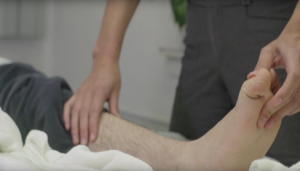
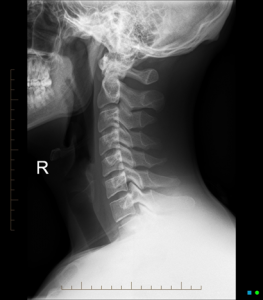
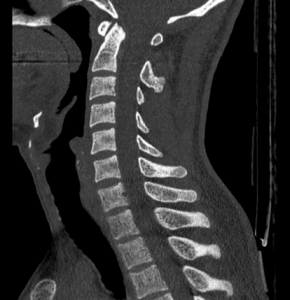
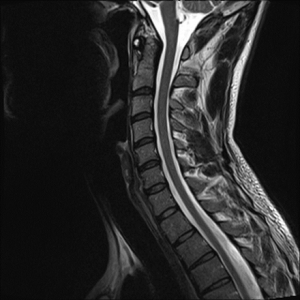

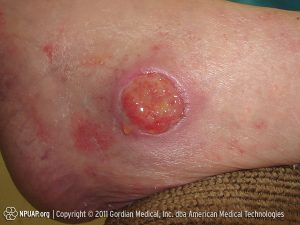

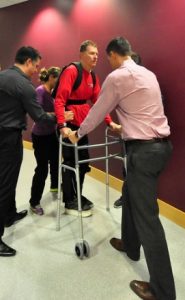 Physiotherapists (Physical therapists, PTs) specialize in helping people improve their movement and function. Physiotherapists work with people with spinal cord injuries on developing strength and movement, mobility skills like transfers and walking, and in other areas like prescribing mobility devices and treating wounds and pain.
Physiotherapists (Physical therapists, PTs) specialize in helping people improve their movement and function. Physiotherapists work with people with spinal cord injuries on developing strength and movement, mobility skills like transfers and walking, and in other areas like prescribing mobility devices and treating wounds and pain. Psychologists are health professionals who specialize in mental health and treating mental disorders. Psychologists provide assessment, counselling, and therapy for mental disorders and support for problems related to coping and adjustment.
Psychologists are health professionals who specialize in mental health and treating mental disorders. Psychologists provide assessment, counselling, and therapy for mental disorders and support for problems related to coping and adjustment. Electrocardiogram (ECG) monitoring: Electrocardiograms or ECGs are used to measure the rate and rhythm of the heart in greater detail. ECG involves the use of a number of small sticky pads which are attached at various points on the chest and body. These are connected via electrical leads to a monitor that displays the heart rhythms.
Electrocardiogram (ECG) monitoring: Electrocardiograms or ECGs are used to measure the rate and rhythm of the heart in greater detail. ECG involves the use of a number of small sticky pads which are attached at various points on the chest and body. These are connected via electrical leads to a monitor that displays the heart rhythms.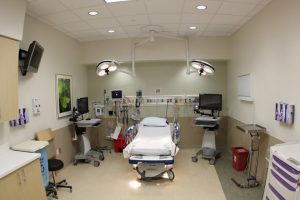 Feeding tube: A feeding tube may be used to deliver nutrition. This tube may go into the body through the nose, stomach, or
Feeding tube: A feeding tube may be used to deliver nutrition. This tube may go into the body through the nose, stomach, or 